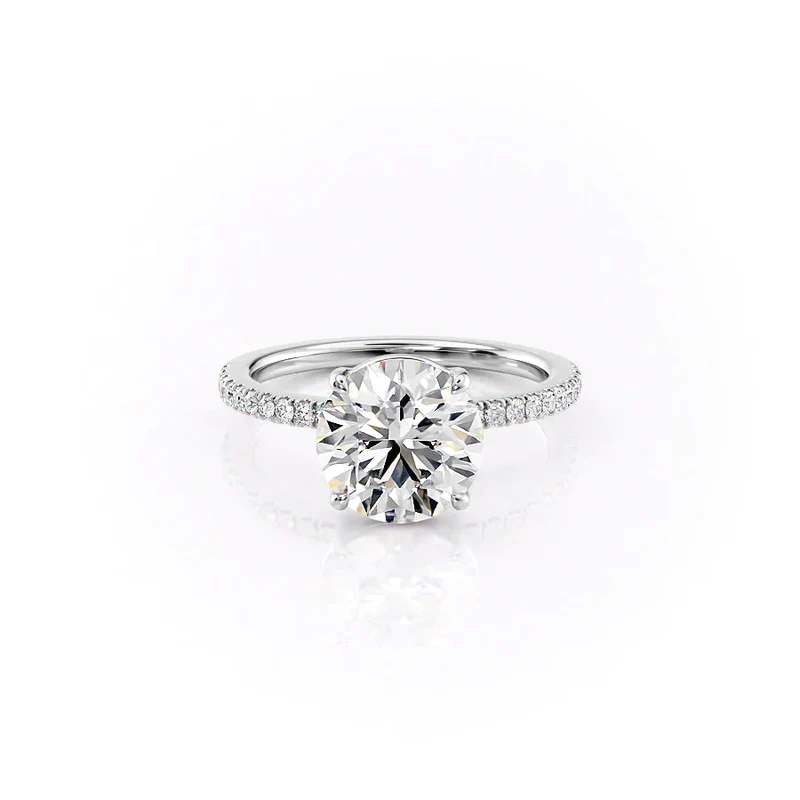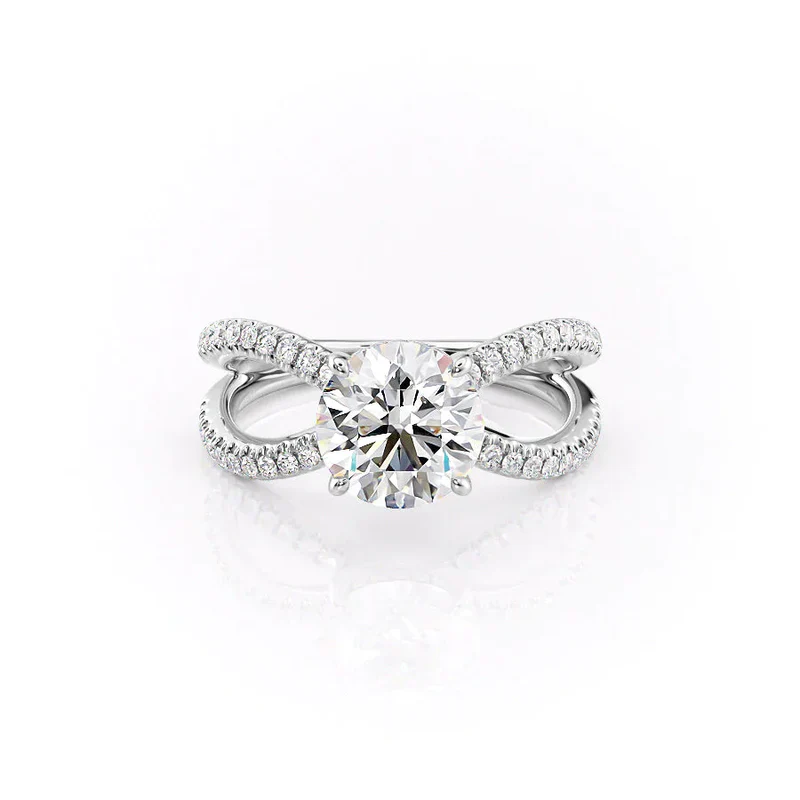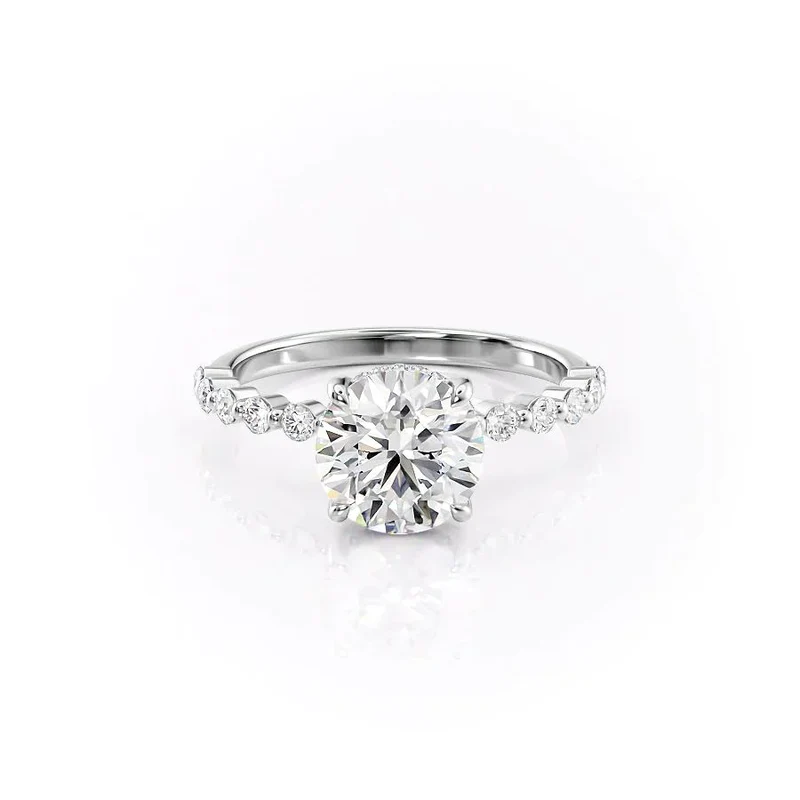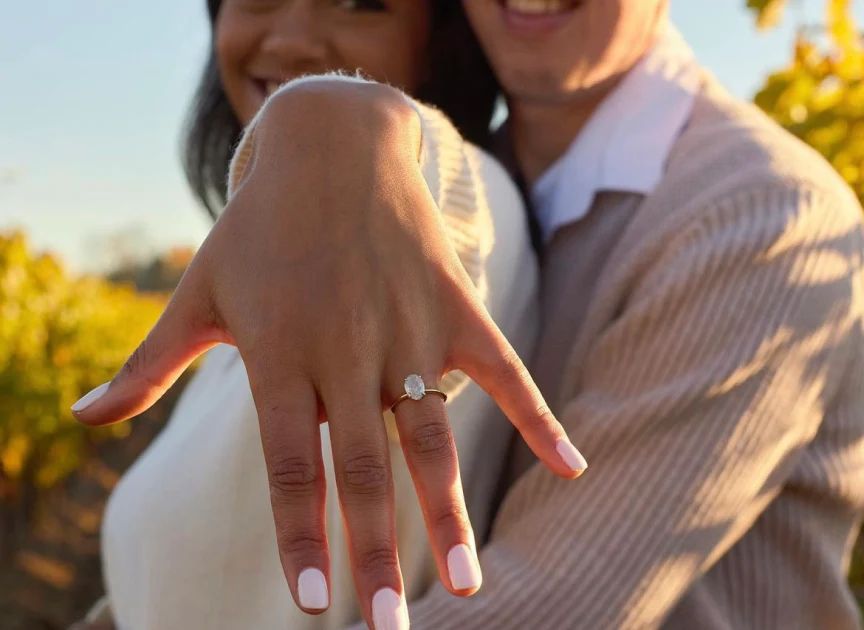No products in the cart.
Carat Size Guide
Discover the details of carat sizes and find the perfect measure of your brilliance.

The carat is the traditional unit of measurement for a diamond’s weight. Moissanite is not measured in carats because it weighs approximately 10 percent less than diamond. For example, a 6.4mm round diamond would weigh 1.00ct, while a 6.4mm round moissanite would weigh 0.88ct. Therefore, moissanite is typically categorized by its millimeter size rather than carat weight to avoid confusion. In this guide, we refer only to the carat sizes of diamonds.
Carat Definition: What Is a Carat?
Carat measures a diamond’s weight, not its size. One carat equals 0.2 grams, about the weight of a paper clip.
While many people may assume that a higher carat number means a larger center stone, the actual physical size of a diamond also depends on its cut and shape. In other words, two gemstones of the same carat weight can look drastically different in size, depending on how they are cut.Carat is one of the four key factors that define a diamond’s quality and value. It’s important not to confuse it with “karat,” which measures the purity of gold.
How Big is a Carat?
It is important to note that carat weight does not necessarily denote size. Different gemstones have different densities, moissanite stones are about 15 – 18% lighter than diamonds. Therefore, while a 6.5mm round diamond weighs 1.0 carat, a 6.5mm moissanite weighs 0.83 – 0.85 carats. However, the two stones would be the same actual size: 6.5mm in diameter.Factors like shape, cut, and depth also affect how large a gemstone looks. Keep in mind that every gemstone is unique, so carat weight can appear differently depending on the stone.

How Is Diamond Carat Measured?
One carat weighs 0.2 grams or 0.007 ounces. A stone weighing 1 gram would be 5 carats. Now that’s a big chunk of diamond! Diamonds are also referred to in points. 1 carat is 100 points, while a half-carat diamond might be called a 50-pointer diamond.

Diamond Carat vs. Diamond Size
Many people confuse carat weight with the size of the gemstone. While carat weight gives an idea of how heavy the diamond is, size is actually determined by the diamond’s shape and cut. Therefore, a “1-carat diamond” could appear quite different depending on whether it is cut in a round, oval, or emerald shape. A diamond’s cut also influences how well it reflects light, further affecting its visual appeal.
Diamond Carat Chart
This chart provides an estimate of the average size of different diamond shapes at various carat weights. Each image represents a top-down view of the diamond.

You may notice that two diamonds with the same carat weight can look different in size. This is because a diamond’s shape, along with its density and depth, significantly affects how its carat weight appears.
Our Top Picks
Explore our most popular pieces, sure to be beloved for years to come
How Important Is Diamond Carat?
Carat weight is an important factor for many customers when choosing a diamond. As one of the 4 C’s (cut, color, clarity, and carat), it plays a key role in determining a diamond’s quality and value.
In general, diamonds with higher carat weights are more expensive because larger diamonds are rarer. However, price isn’t just about carat weight—if two diamonds have the same carat but different cut, color, or clarity, their prices can vary significantly.

How Carat Affects Value
Diamonds are typically priced per carat, but the price doesn’t increase linearly as carat size increases. Larger diamonds are much more valuable because they are rarer in nature, so the price per carat increases dramatically as the carat weight grows. For example, a 2-carat diamond would be valued higher than two 1.0-carat diamonds of the same quality. Therefore, understanding the relationship between carat weight and price can help you determine the best diamond for your budget.
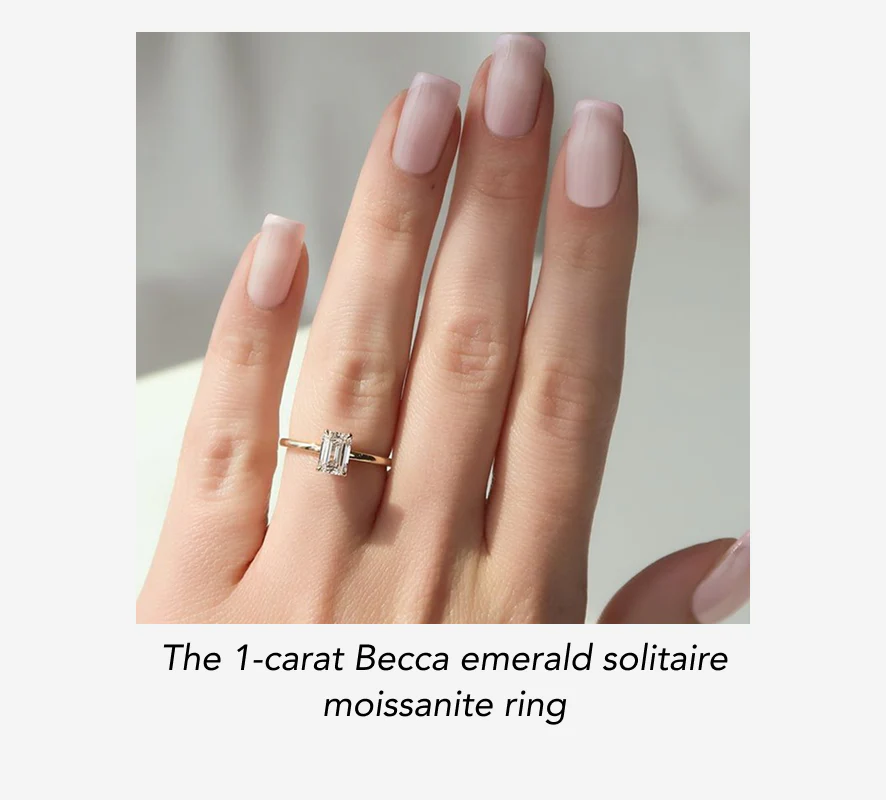
You may notice that two diamonds with the same carat weight can look different in size. This is because a diamond’s shape, along with its density and depth, significantly affects how its carat weight appears.
Is Carat the Only Factor That Affects the Size Appearance of a Diamond?
Carat weight isn’t the only thing that determines how big a diamond looks. Shape, depth, and symmetry all play a role in its appearance.Both depth and shape are noted on a diamond’s certification report, so reviewing these details can help you choose a diamond that looks larger without increasing carat weight (and cost).
More Tips on How to Make a Diamond Look Bigger
- Halo setting: A halo setting surrounds your center stone with smaller diamonds, adding extra sparkle and making the main diamond look bigger.
- Thin bands: A delicate band enhances the size and appearance of your center stone, while a thick band can draw attention away from it.
- Lab diamonds: Lab-grown diamonds offer a larger carat weight for a lower price compared to natural diamonds. They are optically, chemically, and physically identical to mined diamonds, making them a great choice for a bold look at a more affordable cost.
- Diamond alternatives: Moissanite is a stunning, budget-friendly alternative to diamonds. While different in composition, its brilliance and fire closely resemble that of a diamond.
- Regular cleaning: Keep your diamond sparkling! A clean, well-maintained stone looks brighter and larger than one dulled by dirt and oils.
Diamond Carat FAQs
What is the average carat size for engagement rings?
The typical engagement ring features a diamond around 1.5 carats. Lab-grown diamond engagement rings tend to be slightly larger on average compared to natural diamonds.
Which engagement ring shape looks the biggest?
Marquise, oval, and pear-shaped diamonds create the strongest illusion of size.
The marquise cut: With its elongated form and pointed ends, maximizes surface area.
The oval cut: Enhances size while offering an elegant, flattering shape.
The pear cut: Combines round and marquise features for an even larger appearance.
How to change your engagement ring’s carat size?
You can enhance your engagement ring’s look without changing the diamond’s carat size. Adding stackable bands or a halo setting helps increase the overall sparkle and makes the central stone appear larger. Some couples also choose to upgrade the diamond later for anniversaries or milestones, allowing for budget flexibility and preferences over time.
Can you tell the difference between a 1 carat and 0.9 carat diamond ring?
The 0.1ct difference between 0.9ct and 1ct is minimal – typically a difference of around 0.2mm in the diamond’s length. For most people, the difference between a 1 carat and a 0.9 carat diamond ring appears minimal and not noticeable.




































